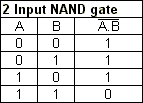Networking is the form of computer communication generally used for exchanging data and information. Two or more computers are connected together or networked by some types of communication media (wire or cable) to form a data path as to exchange program and data files between them.
Networking allows accessing shared output devices and data storage connected to the network. Examples of shard devices are printers, plotters and hard disks.
Need
Networking satisfies a broad range of purposes and meets various requirements. Networking has become essential for the following reasons:
1. File sharing
2. Resource sharing
3. Unlike equipment and communication.
4. To improve speed and accuracy.
5. Low cost.
6. For instant availability of data.
File Sharing
Networking enables a user to share files between all the connected computers. For example, the users of an organization having its different offices at distant places in a city, which are physically separated but are connected on a network, can share their files and data without moving physically to each and every office.
Resource Sharing
Laser printers and hard disks can be expensive. Networking enables users to share such resources by networking several computers together. For example, a company with say 20 users, each requiring only limited hard disk space and occasional printing, might save money by purchasing fewer resources and sharing them.
Unlike Equipment Communication
Through networking it is also possible to share and send messages between computers having equipment of different brands and using different operating systems like DOS, UNIX, MacOS, etc.
Improve Speed and Accuracy
Sending messages through a network is instantaneous as compared to a common letter, which takes several days to deliver. Computers can send data at very fast speed through satellite or microwave links. Also there are less chances of data being lost in case of networking. Accuracy is also maintained here.
Low Cost.
The cost of ttransferring data between computers connected on a network is lower than by other conventional means of transferring documents.
Instant Availability
Since the time taken in transferring data is quite small, data is available instantlyy at the other end. This feature is useful for communication price fluctuations in foreign exchange and in share/equity trading etc.


















